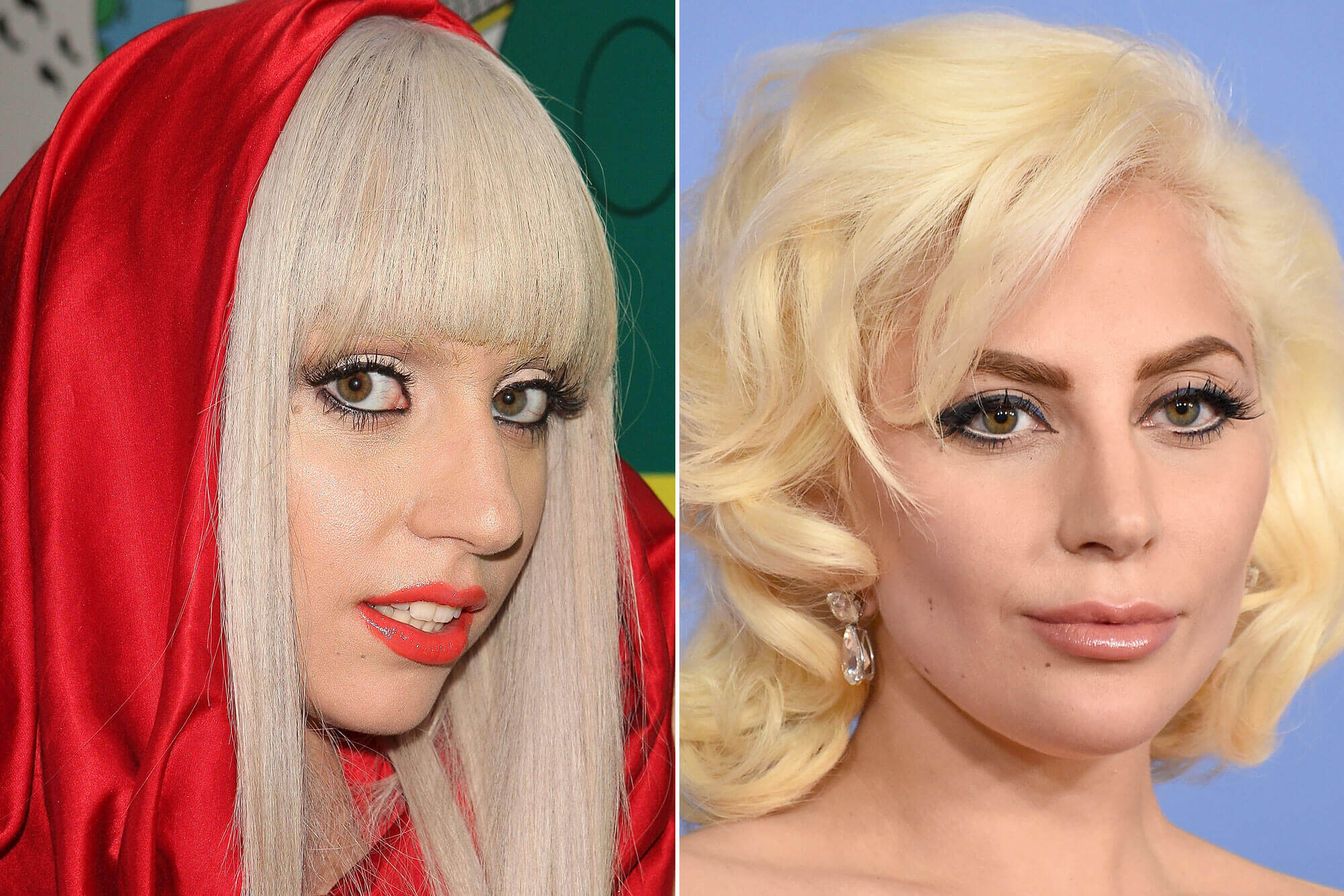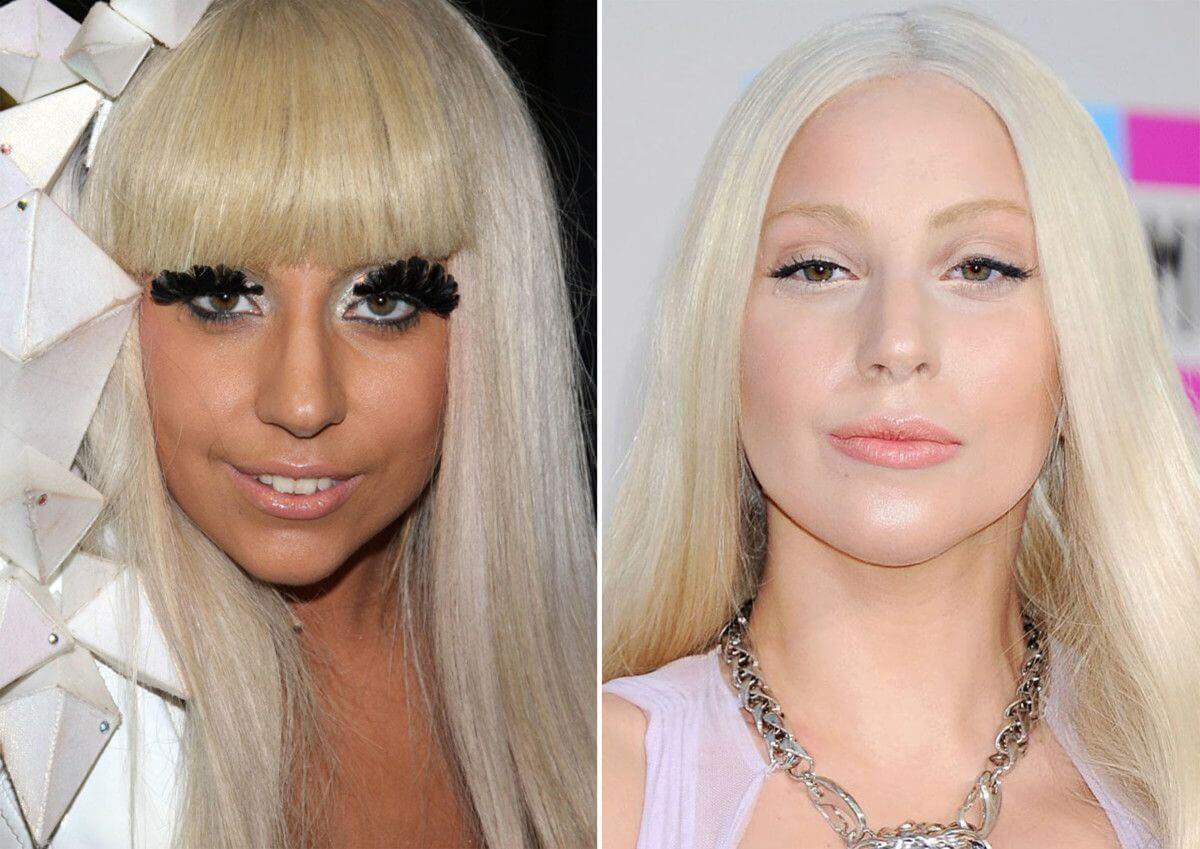Plastic surgery is frequently a heated topic of conversation when it comes to the world of celebrities. The multi-talented musician Lady Gaga is one such celebrity who has been the focus of such rumors. Lady Gaga, who is well-known for her unique style and strong vocals, has never shied away from discussing her thoughts on body image and self-expression. This article aims to explore the rumors and facts surrounding Lady Gaga’s alleged plastic surgery procedures, providing an informed perspective based on expert knowledge in the field of plastic surgery.
The Rumors and Speculations

Over the years, Lady Gaga has faced numerous speculations regarding her appearance. Some believe that she has undergone procedures such as rhinoplasty (nose job), facial fillers, and Botox. It’s crucial to remember that these are just conjectures, frequently based on comparisons of her images taken throughout time. The truth is that a number of things, such as makeup methods, lighting, aging, and weight swings, can cause changes in look.
Lady Gaga’s Stance on Plastic Surgery
Lady Gaga has always been vocal about her views on plastic surgery.
She claimed, in a 2011 interview with Harper’s Bazaar, “I have never had plastic surgery, and there are many pop singers who have.” “I think that encouraging insecurity through plastic surgery is infinitely more harmful than an artistic expression related to body modification,” she continued.
The Role of Non-Surgical Procedures
While Lady Gaga has denied having surgery, she hasn’t held back when talking about the non-surgical techniques she’s used. In the same interview with Harper’s Bazaar, she admitted to using facial treatments like facelift tape to change her features for artistic purposes. She also mentioned her use of teardrop fillers and various other non-invasive procedures.
Expert Analysis on Plastic Surgery

It’s vital to stress, as a plastic surgery specialist, that changes in a person’s appearance do not necessarily signify plastic surgery. Professionals look for specific signs such as scars, unnatural looking changes, or alterations that are typically unachievable through natural means. These indications, meanwhile, do not always prove that a person has had plastic surgery, as non-surgical techniques can also cause noticeable changes in appearance.
Comparison of Surgical and Non-Surgical Procedures
The two types of operations, surgical and non-surgical, differ significantly. Surgery involves intrusive techniques that change the body’s structure, frequently producing more dramatic outcomes, such as rhinoplasty or breast augmentation. These procedures typically require anesthesia and have longer recovery times. Contrarily, non-surgical treatments like fillers or Botox are less invasive and frequently don’t require any recovery time. However, the results are typically more subtle and temporary.
Discussion of Societal Pressures
Societal pressures and beauty standards often drive individuals to consider plastic surgery. Due to their continual exposure to the public, celebrities like Lady Gaga may experience these pressures to an especially high degree. The desire to maintain a youthful appearance or to conform to certain beauty standards can lead to the decision to undergo plastic surgery. It’s crucial to keep in mind, though, that every person’s choice is unique and subject to a number of influences.
Case Studies
There are numerous celebrities who have openly discussed their experiences with plastic surgery. For instance, actress Jane Fonda has been open about her decision to have a facelift and eyelid surgery. Similarly, reality TV star Kris Jenner has publicly discussed her experiences with cosmetic procedures, including a facelift and Botox injections. These celebrities’ openness about their experiences helps to destigmatize plastic surgery and promotes a more honest conversation about its role in our society.
Statistics on Plastic Surgery
The American Society of Plastic Surgeons (ASPS) has revealed data showing that 17.5 million surgical and minimally invasive cosmetic treatments were carried out in the US in 2017, a 2% rise from 2016. The statistics also reveal that minimally invasive cosmetic procedures have increased nearly 200% since 2000.
These statistics show how surgical and non-surgical aesthetic procedures are becoming more and more popular.
Quotes from Other Interviews
In addition to her 2011 interview with Harper’s Bazaar, Lady Gaga has discussed her views on plastic surgery in other instances.
In an interview with The Mirror in 2011, for instance, she stated, “I have never had plastic surgery, and I do not intend to.”
This attitude, which she has constantly upheld throughout her career, emphasizes her belief in inherent beauty and self-acceptance.
More Info About Lady Gaga

| Information | Details |
|---|---|
| Full Name | Stefani Joanne Angelina Germanotta |
| Stage Name | Lady Gaga |
| Date of Birth | March 28, 1986 |
| Place of Birth | New York City, U.S. |
| Nationality | American |
| Ethnicity | Italian |
| Occupation | Singer, songwriter, actress |
| Genres | Pop, dance, electronic |
| Years Active | 2001–present |
| Notable Works | “Just Dance”, “Poker Face”, “Bad Romance”, “Born This Way”, “Shallow”, “Rain On Me” |
| Awards | Multiple Grammy Awards, Academy Award, BAFTA Award, Golden Globe Award |
FAQs
Q: What is Lady Gaga’s real name?
- A: Lady Gaga’s real name is Stefani Joanne Angelina Germanotta.
Q: Is Lady Gaga Italian?
- A: Yes, Lady Gaga is of Italian descent. Both of her parents have Italian ancestry.
Conclusion
In conclusion, despite the fact that there has been a lot of speculative discussion around Lady Gaga’s purported plastic surgery treatments, the singer has constantly refuted these allegations. It’s vital to stress, as a plastic surgery specialist, that changes in look can be linked to a variety of circumstances and do not always signify plastic surgery.
Additionally, it is important to respect the personal choice someone makes to get plastic surgery. As societal pressures and beauty standards continue to evolve, it’s crucial to promote a dialogue that respects individual choices and encourages self-acceptance.








